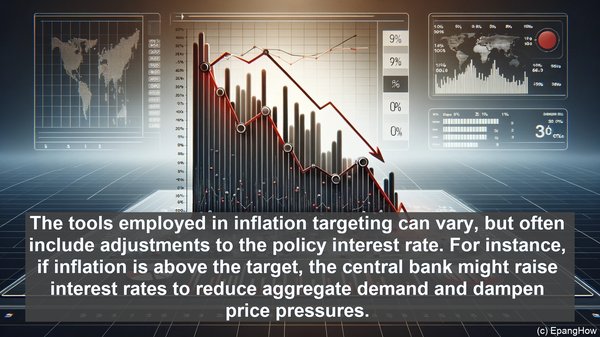Introduction: The Significance of Monetary Policy
Hello, everyone! Welcome to today’s article. Monetary policy plays a pivotal role in shaping a nation’s economy. By influencing the money supply, interest rates, and credit availability, central banks aim to maintain price stability, promote economic growth, and ensure financial stability. Among the various strategies employed, monetary aggregate targeting and inflation targeting have garnered considerable attention. Let’s delve into these approaches and understand how they differ.

Monetary Aggregate Targeting: A Broad-Based Approach
Monetary aggregate targeting revolves around controlling the growth rate of a broad measure of money supply, such as M2 or M3. The underlying assumption is that changes in the money supply have a direct impact on economic activity and inflation. By setting specific targets for the growth rate of these aggregates, central banks aim to exert control over the economy. For instance, if the economy is overheating, the central bank might reduce the growth rate of money supply to curb inflationary pressures. Conversely, during a recession, increasing the money supply can stimulate economic activity. This approach is often associated with a more ‘hands-on’ role for the central bank in actively managing the money supply.

Inflation Targeting: Prioritizing Price Stability
Inflation targeting, on the other hand, places the spotlight on price stability. Central banks adopting this approach set a specific target for inflation, often expressed as an annual percentage. The objective is to keep inflation within a desired range, typically around 2%. By focusing on inflation, central banks aim to anchor inflation expectations, as these expectations can influence wage and price-setting behavior. The tools employed in inflation targeting can vary, but often include adjustments to the policy interest rate. For instance, if inflation is above the target, the central bank might raise interest rates to reduce aggregate demand and dampen price pressures. Conversely, if inflation is below target, lowering interest rates can stimulate spending and economic activity.
Key Differences: Objectives and Flexibility
While both monetary aggregate targeting and inflation targeting aim to achieve macroeconomic stability, their primary objectives differ. Monetary aggregate targeting emphasizes controlling the money supply, with the assumption that this will have a direct impact on economic activity and inflation. Inflation targeting, on the other hand, prioritizes price stability, recognizing the importance of inflation expectations. Another key difference lies in the flexibility of these approaches. Monetary aggregate targeting allows for more discretion in the choice of policy tools, such as adjusting reserve requirements or engaging in open market operations. Inflation targeting, with its focus on interest rate adjustments, can be seen as a more transparent and rule-based approach.
Evaluating the Effectiveness: Pros and Cons
Both monetary aggregate targeting and inflation targeting have their strengths and limitations. Proponents of monetary aggregate targeting argue that it provides a more holistic view of the economy, considering the role of money in transactions and economic activity. It also allows for a more active role for the central bank in managing the economy. Inflation targeting, on the other hand, is often seen as more forward-looking, as it focuses on inflation expectations. This can help in avoiding the need for abrupt and potentially disruptive policy adjustments. However, critics argue that inflation targeting might lead to a neglect of other important variables, such as financial stability. Additionally, accurately measuring and forecasting inflation can pose challenges.
